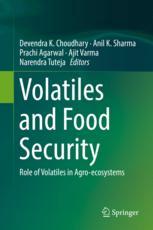

Most ebook files are in PDF format, so you can easily read them using various software such as Foxit Reader or directly on the Google Chrome browser.
Some ebook files are released by publishers in other formats such as .awz, .mobi, .epub, .fb2, etc. You may need to install specific software to read these formats on mobile/PC, such as Calibre.
Please read the tutorial at this link: https://ebookbell.com/faq
We offer FREE conversion to the popular formats you request; however, this may take some time. Therefore, right after payment, please email us, and we will try to provide the service as quickly as possible.
For some exceptional file formats or broken links (if any), please refrain from opening any disputes. Instead, email us first, and we will try to assist within a maximum of 6 hours.
EbookBell Team

0.0
0 reviewsThis book presents research on volatiles produced by microbes and plants along with their biotechnological implications for sustainable agriculture. A greater understanding of how plants and microbes live together and benefit each other can provide new strategies to improve plant productivity, while at the same time helping to protect the environment and maintain global biodiversity. To date, the use of chemicals to enhance plant growth or induced resistance in plants has been limited due to the negative effects and the difficulty in determining the optimal concentrations to benefit the plant. The book discusses extensive studies on biological alternatives that avoid these problems, and the research presented suggests that these compounds could offer an environmentally sound means to better grow and protect plants under greenhouse or field conditions. To understand the nature of VOCs and gene expression profiling of plant genes responding against these compounds can be conducted. It is possible that VOCs produced by microbes while colonizing roots are generated at sufficient concentrations to trigger plant responses. In conclusion, positive or negative effects of VOCs on plant productivity will be dependent on upon specific VOCs microbial strain, plant genotype, and presence/absence of abiotic/biotic stresses